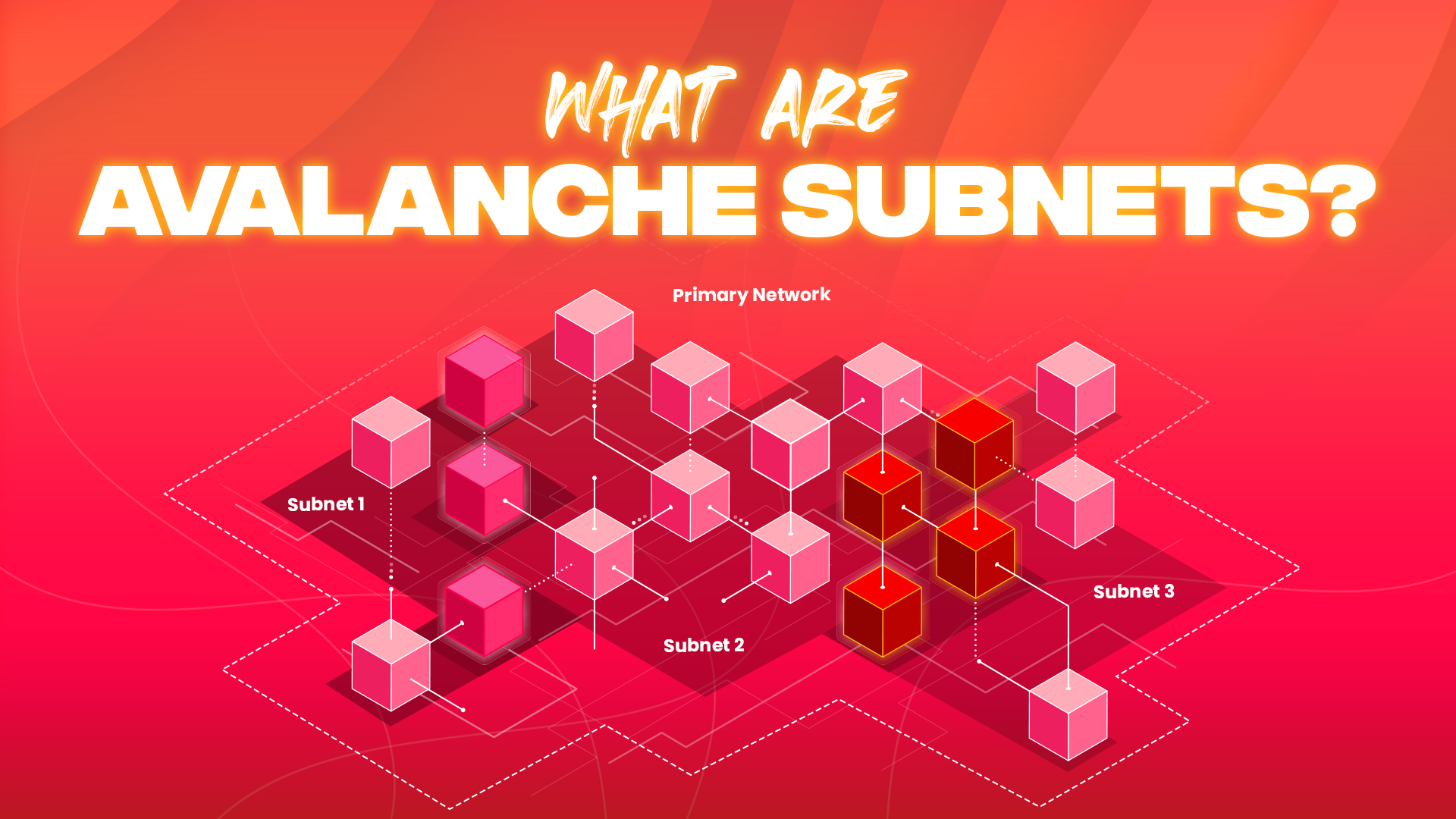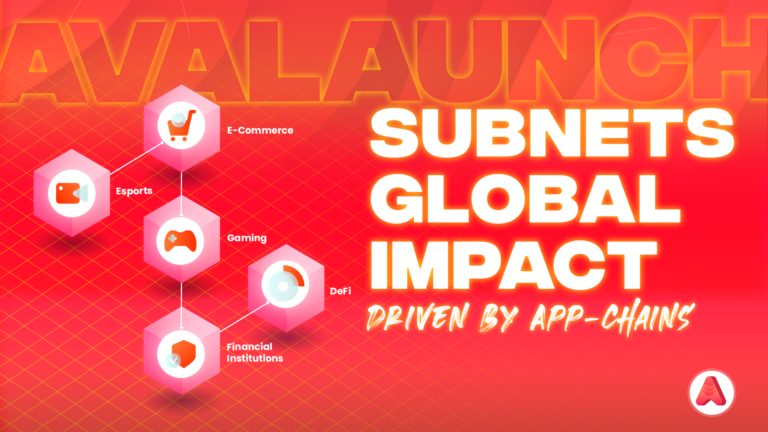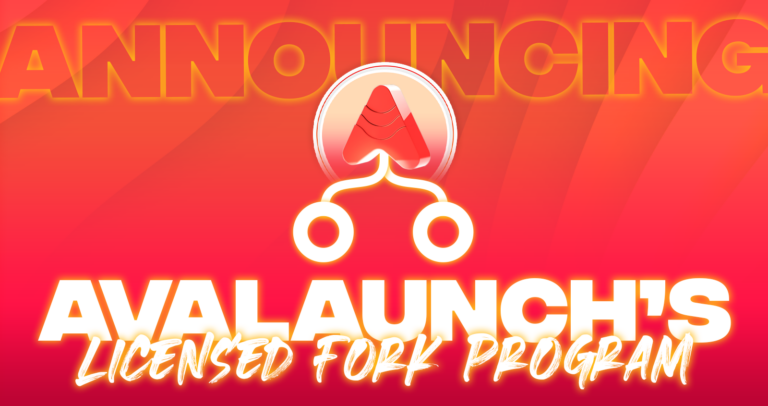
In this article, we delve deep into the world of Avalanche Subnets, breaking down the features that make them such game changers in the blockchain industry. We will unravel the Subnet evolution to date, by looking into the key technical updates that have shaped them into such effective global frameworks. This overview aims to shed light on their impressive transformation in just over a year, showcasing the major developments being made in this rapidly-evolving industry.
What are Subnets?
Subnets are powering the explosive growth of Avalanche by allowing infinite horizontal scaling and rapid experimentation with new models and ideas.
On the foundational layer, Subnets are sovereign blockchains powered by Avalanche’s revolutionary consensus mechanism which enables them to have the fastest time-to-finality – a key consideration for any product utilizing blockchain technology. Simply put – Avalanche is a lightning-fast platform that provides users with a seamless experience.
Architecturally, Subnets consist of a dynamic set of validators who must also validate Avalanche’s Primary network. This design not only maintains a strong security layer but also encourages decentralization. Their most distinctive feature is the high level of customizability they offer, which gives developers the freedom for innovation.
What can be customized?
- Validator Set: Subnet creators can choose who validates their Subnet by specifying requirements. By setting certain parameters, this can ensure that Subnets have the flexibility to meet regulatory compliance – a crucial factor for any platform trying to make a global impact. This could include:
- Geographical location
- Hardware specifications
- KYC
- Permissioned vs Permissionless: The ability to adjust the privacy settings of a Subnet makes it much easier for organizations such as financial institutions to comply with regulations, yet still have a gateway into the permissionless world.
- Virtual Machine: Although the EVM has long been the dominant VM for Web3 builders, it isn’t the ultimate solution for mass adoption. Subnets give developers the freedom to build their own custom VM or leverage HyperSDK, an out-of-the-box solution to build super-fast blockchains. This flexibility empowers teams to tweak their VM behavior precisely to cater to their application needs. Whether it’s prioritizing speed for games or optimizing transaction ordering for DeFi, the possibilities are endless.
- Subnet Gas Token: By allowing Subnet creators to choose their native Subnet token, teams can have a more effective control on their product’s economy. It also unlocks the ability to tweak gas parameters, thereby enabling gasless interactions for a smoother user experience.
The combination of these features positions Subnets as one of the most powerful scaling solutions, that doesn’t compromise on security or decentralization. It’s easy to see why they have attracted so many businesses to build on Avalanche.
A Timeline of Technical Updates
Subnets have only been live for just over a year, but in an industry where the underlying technology is constantly evolving, it can be easy to forget how far we have come.
Let’s put it into perspective by looking at the significant technical updates Subnets have undergone so far:
Banff: Elastic Subnets (October 2022)
The Banff AvalancheGo v.1.9 update introduced ‘Elastic Subnets’, a feature that allows anyone staking on P-Chain to also validate Subnets. Subnet creators now have the option to transform their Subnet into an Elastic Subnet if they wish to open up their validator set. This innovative feature allows nodes to stake custom tokens for Subnet validation. As a result, Subnets can tap into the wider validator ecosystem whilst setting up an incentivization structure for rewarding validators.
This was the first step in pushing towards Subnet validator decentralization and also unlocked another layer to the validator economy. It was also a pivotal moment where Subnet creators and validators could work together to grow the entire Avalanche ecosystem.
Avalanche Warp Messaging (December 2022)
While Subnets enable scalability, the establishment of a global network capable of handling the world’s assets requires seamless interoperability to unleash its true potential. Avalanche Warp Messaging (AWM) brings fast, native communication to all Avalanche Subnets without the need to rely on third party bridges. This effectively eliminates a central point of vulnerability since bridges hold a high value of assets, making them a lucrative target for malicious actors.
On a technical level, AWM uses a cryptographic technique called BLS-Multi Signatures. This enables Subnet validators to collectively produce one signature that proves the validity of a message, verifiable by any other Subnet. Since Subnet validators also validate the Primary Network, they can access the stake weights and BLS public keys of any other Subnet at any time – removing the need to constantly send updates. As BLS-Multi Signatures are always aggregated into a single signature, AWM can achieve high efficiency within a lightweight framework.
AWM also gives developers a high degree of customization. Subnets have the power to determine their own rulesets for how AWM is used, such as choosing which other Subnets they want to interact with and specifying the weight a BLS-Multi-Signature must have to be valid. By having a low level of specifications, AWM gives developers the freedom to not only build more sophisticated communication structures but also refine the UX to create the ultimate interoperability solution.
Avalanche has the quickest time-to-finality, which is what makes AWM so powerful. This is an important parameter for AWM since the source Subnet transaction must be finalised before calling another Subnet. The combination of a lightweight messaging primitive together with Avalanche’s sub-second time-to-finality truly unlocks the composability between Subnets in the most seamless way for users.
HyperSDK (February 2023)
The capability to build custom Virtual Machines on a Subnet was already a powerful feature in itself. However, the introduction of HyperSDK has taken this concept to a whole new level by enabling developers to construct next-generation blockchains out-of-the-box. The HyperSDK framework accelerates the custom VM process from months to just a few days – empowering builders to focus on the customizations they need to create a superior execution environment for their application.
Although still in its early stages of development, HyperSDK is already able to achieve an impressive 50K+ TPS with sub-second finality, giving us a glimpse into the future of blockchains. As an open-source framework, developers are invited to collectively participate in developing this powerful tool alongside the Ava Labs engineering team.
Never has it been easier for developers to leverage Avalanche’s speed to build powerful blockchains, perfectly optimized for their applications. HyperSDK is a major milestone in Avalanche’s vision of creating a unified network of highly-optimized blockchains.
Glacier API beta (March 2023)
The beta launch of Glacier API is the comprehensive solution for all blockchain data needs, and is the official API service indexing Avalanche Subnets. Using all the data for native assets, ERC-20s and NFTs on Avalanche, Glacier API powers the Avalanche Block Explorer and Core Wallet. By granting developers access to a comprehensive data toolkit, Glacier API enables them to easily build products that leverage real-time and historical transaction data.
It will be exciting to see the new products that are built using Glacier API to further enhance the Avalanche ecosystem.
Join the Subnet Revolution
Each technical update signifies a crucial step forward in building a Subnet-powered future; a future that will revolutionize the world as we know it. Even though Subnets already offer a powerful framework for innovation, we have yet to see their full potential. With Ava Labs, along with Avalanche’s vibrant developer community continuously refining these features and rolling out updates, we’re laying the groundwork in real-time for a future of untapped possibilities.
If you are interested in directly shaping Avalanche’s future, you can:
- Join the Glacier Beta discussion on the Avalanche Forum
- Demo Glacier and submit UX feedback or report bugs
- Participate in the HyperSDK public devnet – find out more by joining the HyperSDK Discord, Builders Discussion and GitHub Repo
For those who would like to experiment with the powerful features of Subnets, start by checking out the Avalanche Developer Docs.




